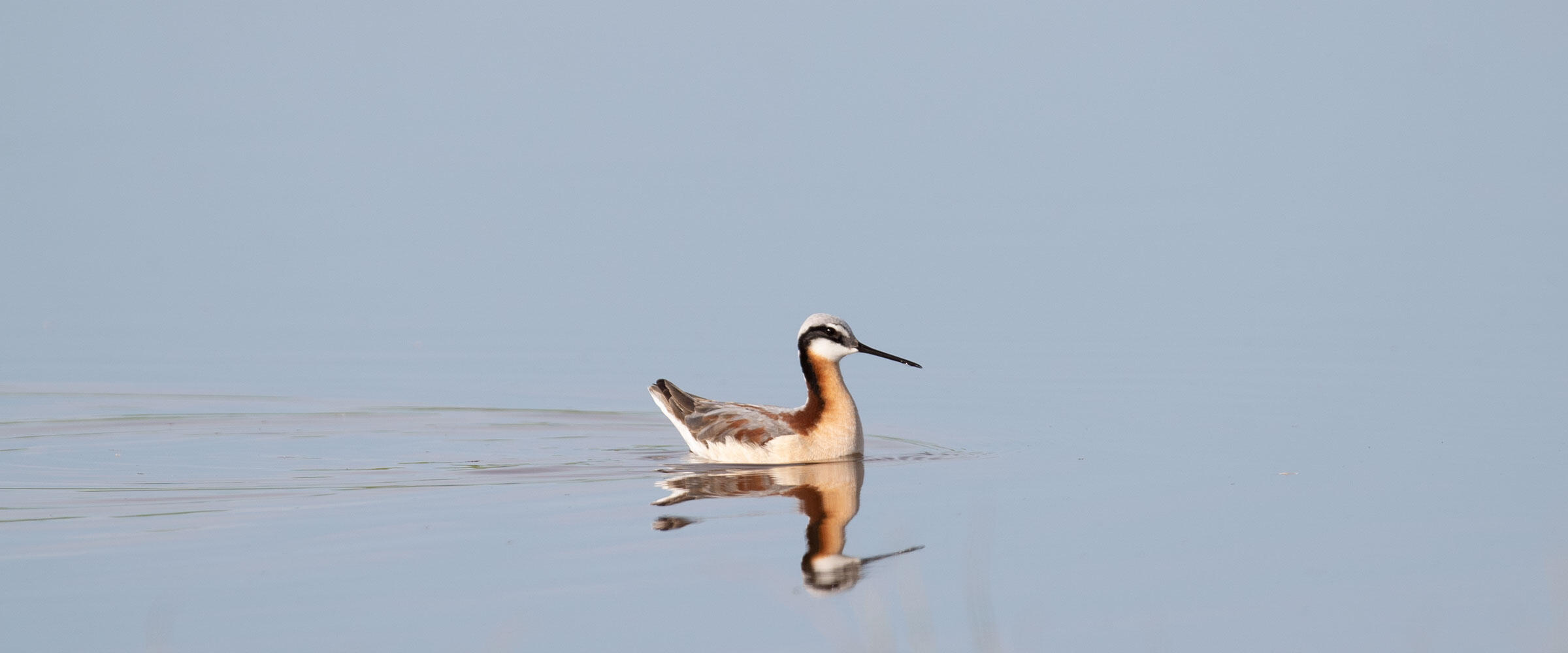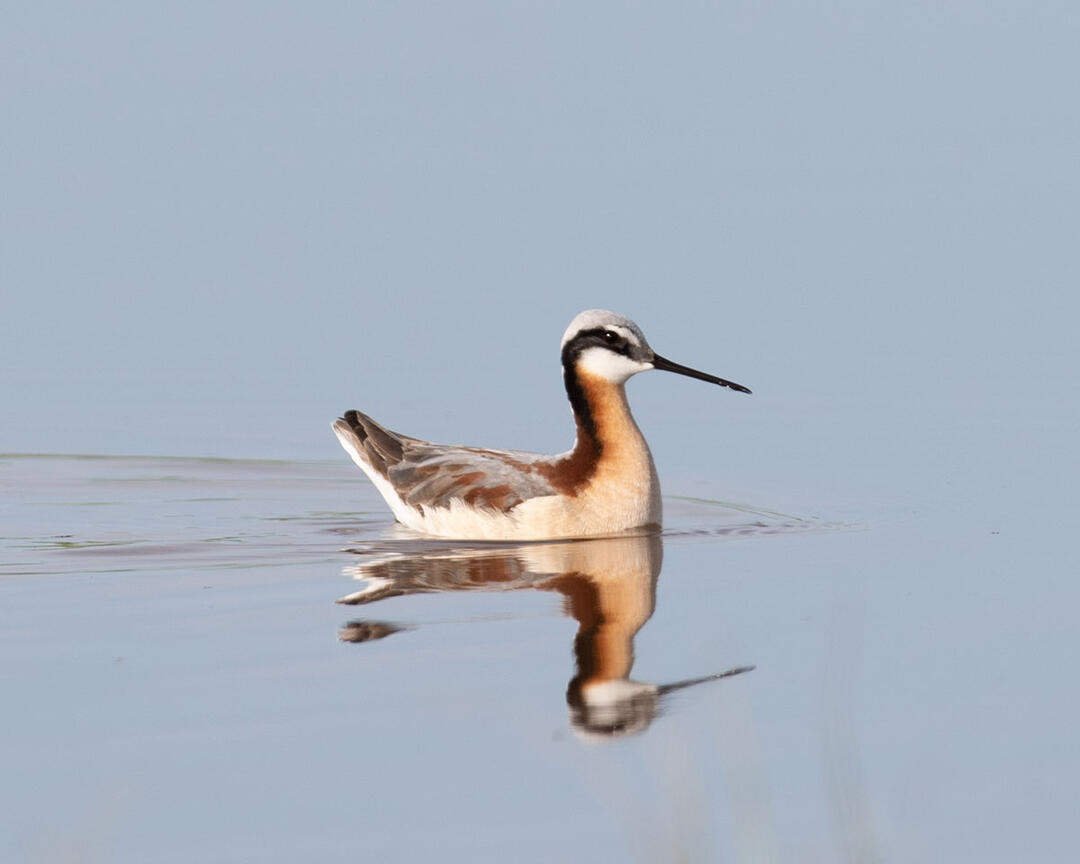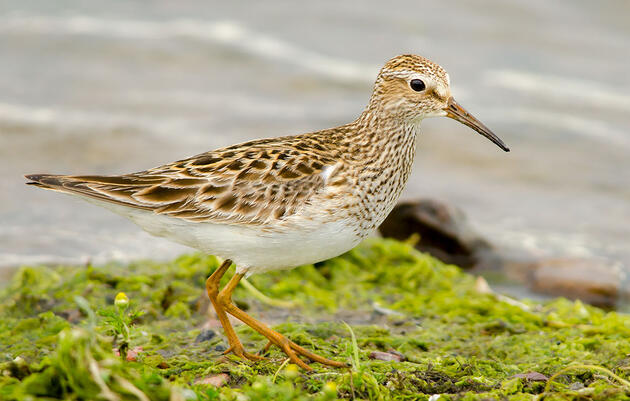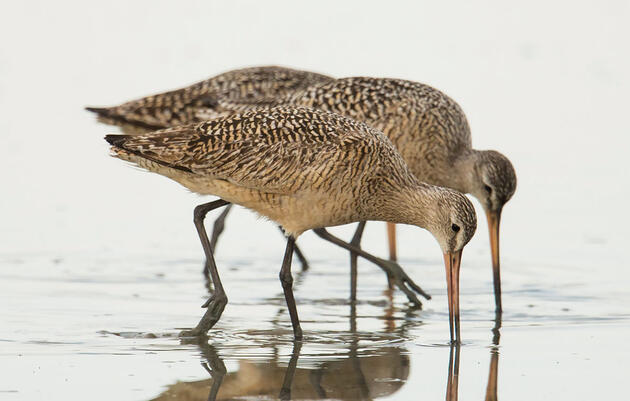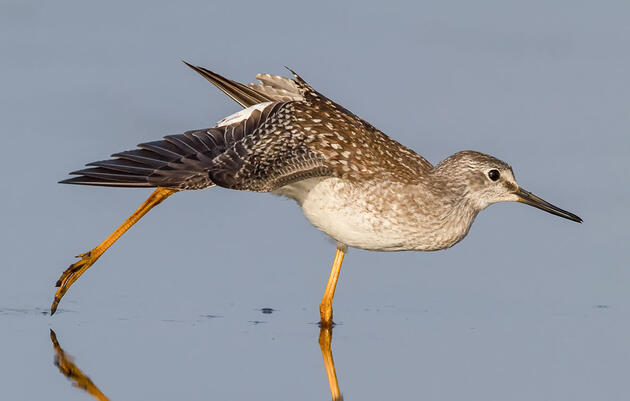Suddenly, thousands of Wilson’s Phalaropes launch skyward, rising in unison from the salty waters of Great Salt Lake to form a large cohesive blob, twisting and turning, rapidly changing directions, flying so densely together that they appear as a distinctive, dark, pulsating shape silhouetted against the brightness of a brilliant blue sky. Then abruptly in unison, the dark flock rotates, revealing their flashy white undersides.
It is called a murmuration, a large group of birds flying together, swiftly changing directions.
A murmuration of flocking Wilson’s Phalaropes as they whirl about the sky in ever-changing patterns ranks at the top of the spectacular and marvelous visual wonders of the natural world.
How do they do it?
The group does not follow a leader nor does each bird track the location of all others. The impulsive movement of but a few individuals reverberates through the flock and thousands of birds react instantaneously as a single entity. Scientists have unraveled part of the story but much still lies shrouded in mystery.

Great Salt Lake is a staging area where a large portion of the world’s population of Wilson’s Phalaropes forage on invertebrates and store energy reserves as they migrate to their wintering grounds. Every year, hundreds of thousands of Wilson’s Phalaropes scatter widely across western Canada and northern United States to nest. In a rare role reversal, the larger, brighter, rusty-white-and-black female lays the eggs, then splits, leaving the less colorful male behind to incubate and then brood the chicks. Often, off she flies to attract another mate and initiate a second clutch. A few of these nine-inch-long phalaropes will nest in the grass/sedge wetlands of Great Salt Lake.
After nesting, about one third of the world’s population of Wilson’s Phalaropes funnel to Great Salt Lake like grains in a giant hourglass. Fall migration on Great Salt Lake becomes a drama as millions of shorebirds make passage through on their annual route south to wintering grounds. Wilson’s Phalaropes are in the vanguard of this massive hemispheric movement, with females arriving in mid-June, followed a couple of weeks later by the males, and lastly the juveniles. Here they feast and fatten, often doubling their weight, primarily on the abundance of brine flies, midges, and other invertebrates.
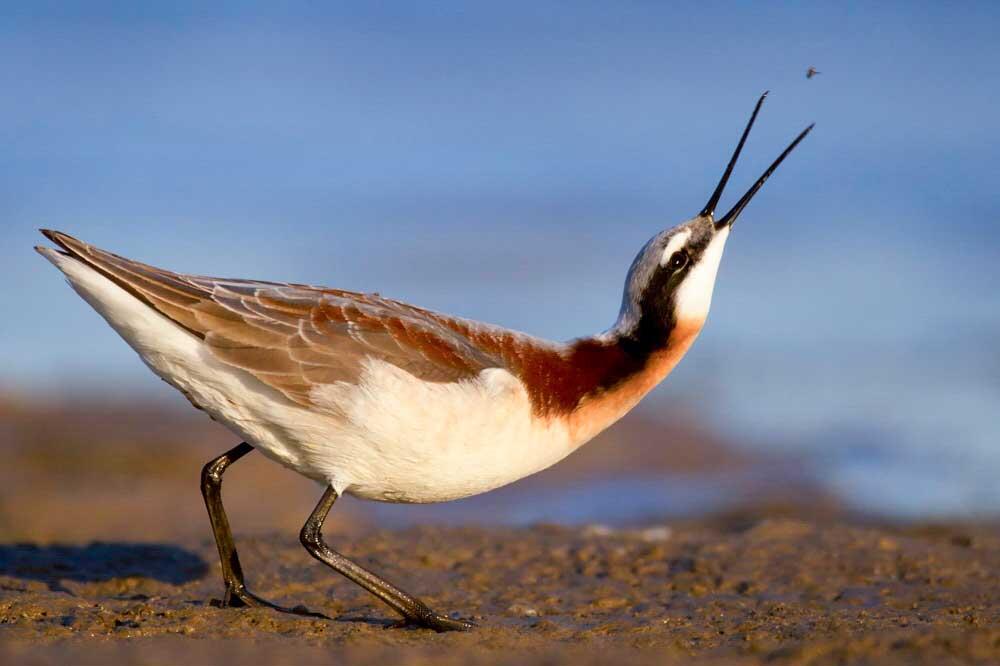
Phalaropes famously spin in circles while jabbing at food vortexed to the surface by the rapid paddling of their flange-toed feet, but they are equally adept at foraging in shallow water. Wilson’s is the only phalarope that regularly forages on bare mudflats. Movement is animated with constant walking, often with jerky motion while scanning for prey. Each individual invertebrate is very small and many must be caught and consumed as efficiently as possible. Capture usually takes only a quick jab but sometimes requires a rapid shaking of the head and bill to dislodge the prey.
Red-necked Phalaropes demonstrate the classic phalarope feeding behavior of spinning in circles to draw in small invertebrates at Gillmor Sanctuary. Video: Evan Barrientos/Audubon Rockies
Phalaropes rise in large groups from the lake so obese they can scarcely fly. With a perpetual flapping of their wings, hour after hour after hour, they cross over the equator, flying 5,000 miles in 54 hours to reach their destination. This epic non-stop journey usually ends somewhere in Argentina, Bolivia, Peru, or Chile at scattered inland saline lakes.
As the phalaropes end their long journey, flight elevation decreases as they glide down from the sky. With a final rapid fluttering of the wings, they settle onto the water’s surface weighing 40 percent less than when they started. The pathway of the adults is thought to follow a grand circle that loops southward over the Pacific Ocean in fall and northward over land in spring. The young follow a more land-based route with more frequent stops.
Here they will remain, south of the equator until the hand of spring turns the hourglass over and they head north once again.

